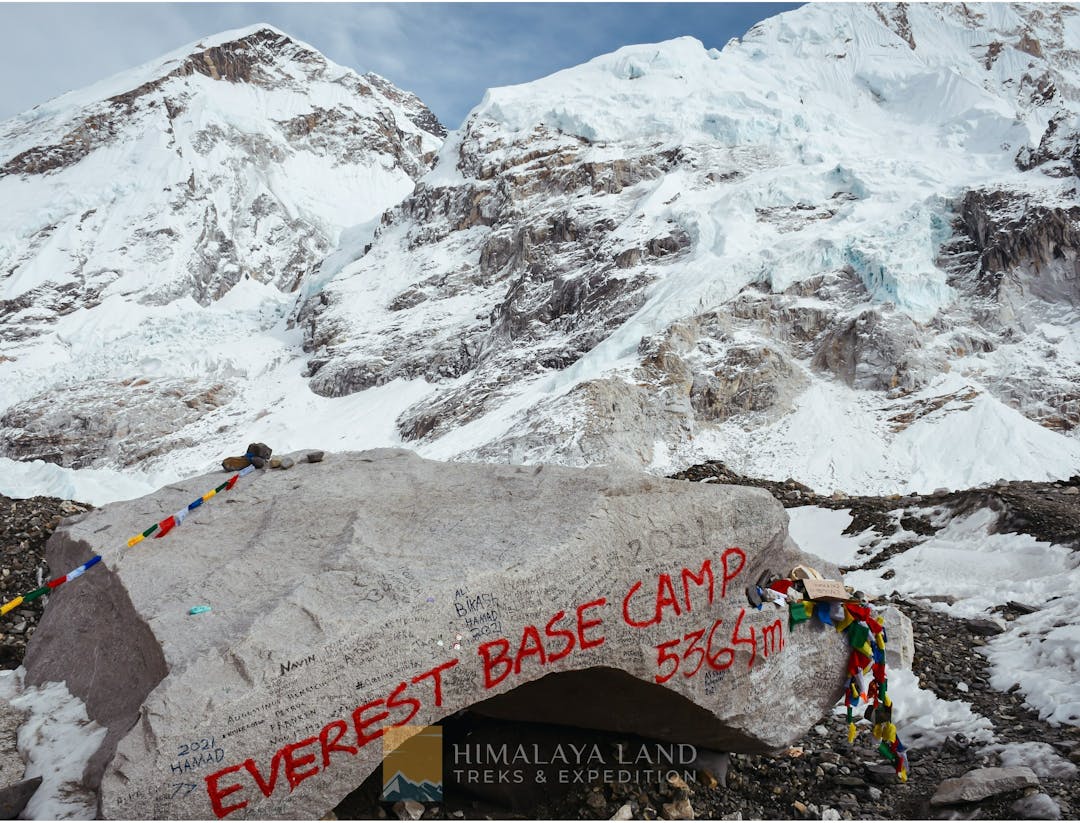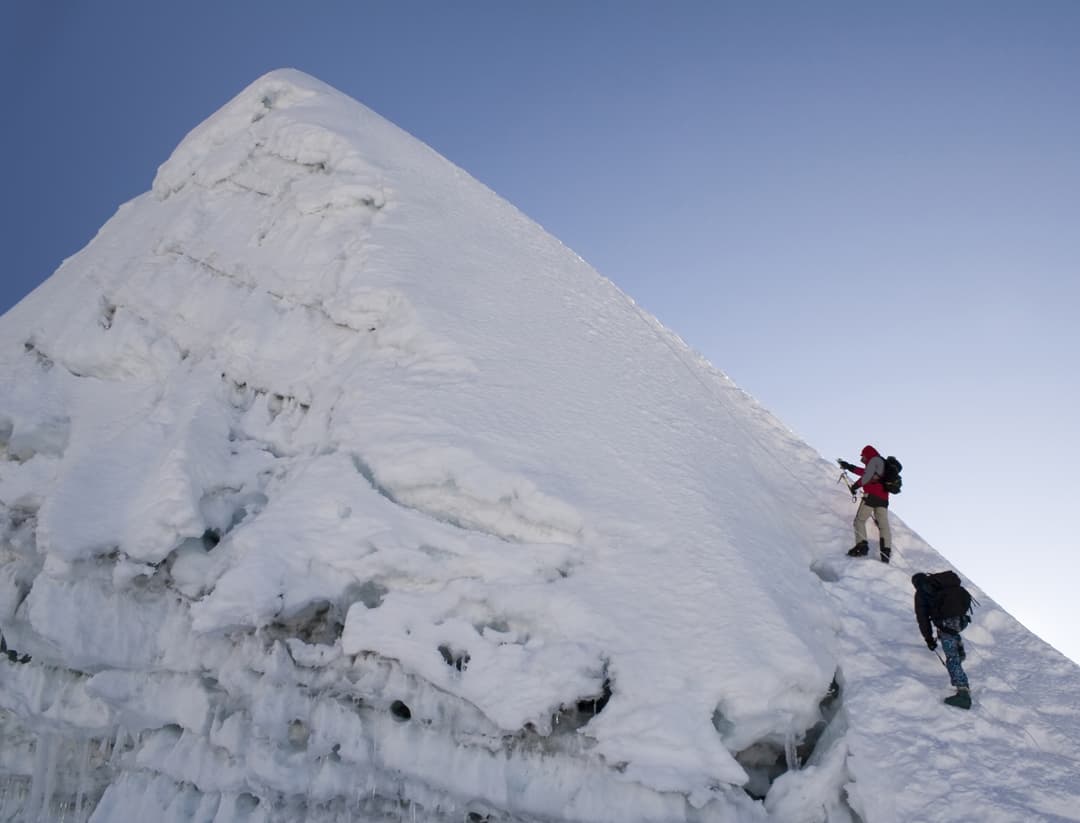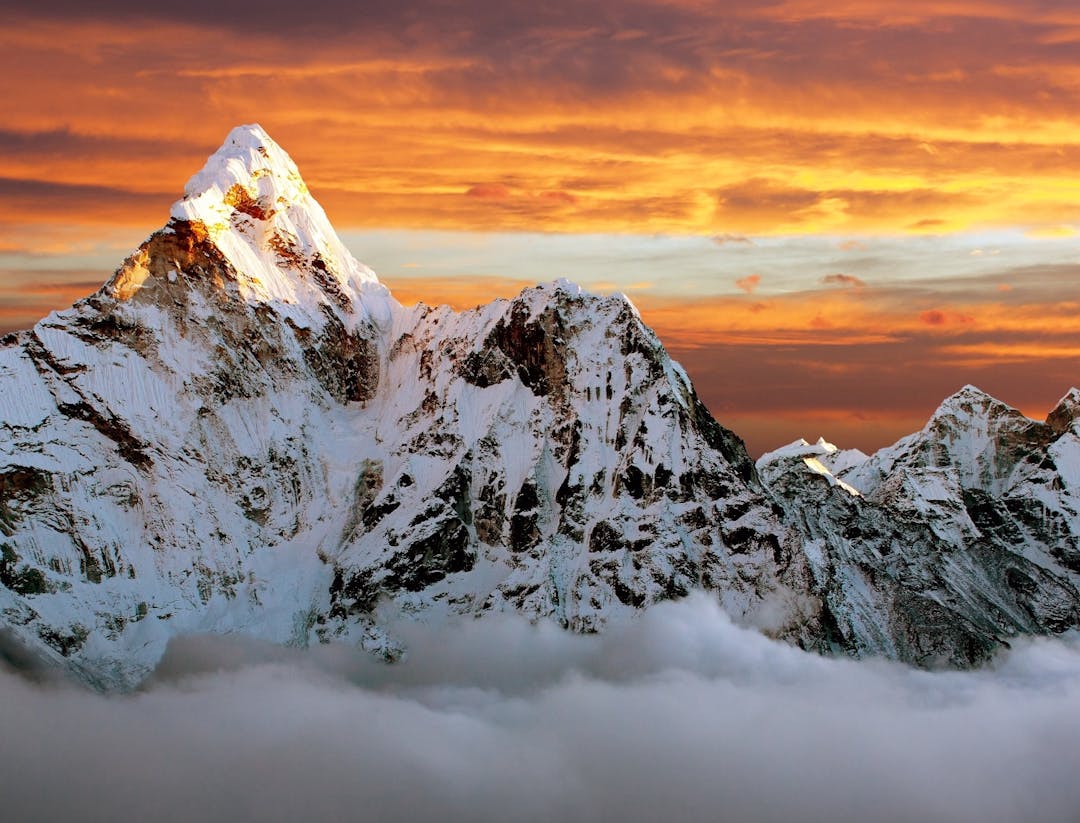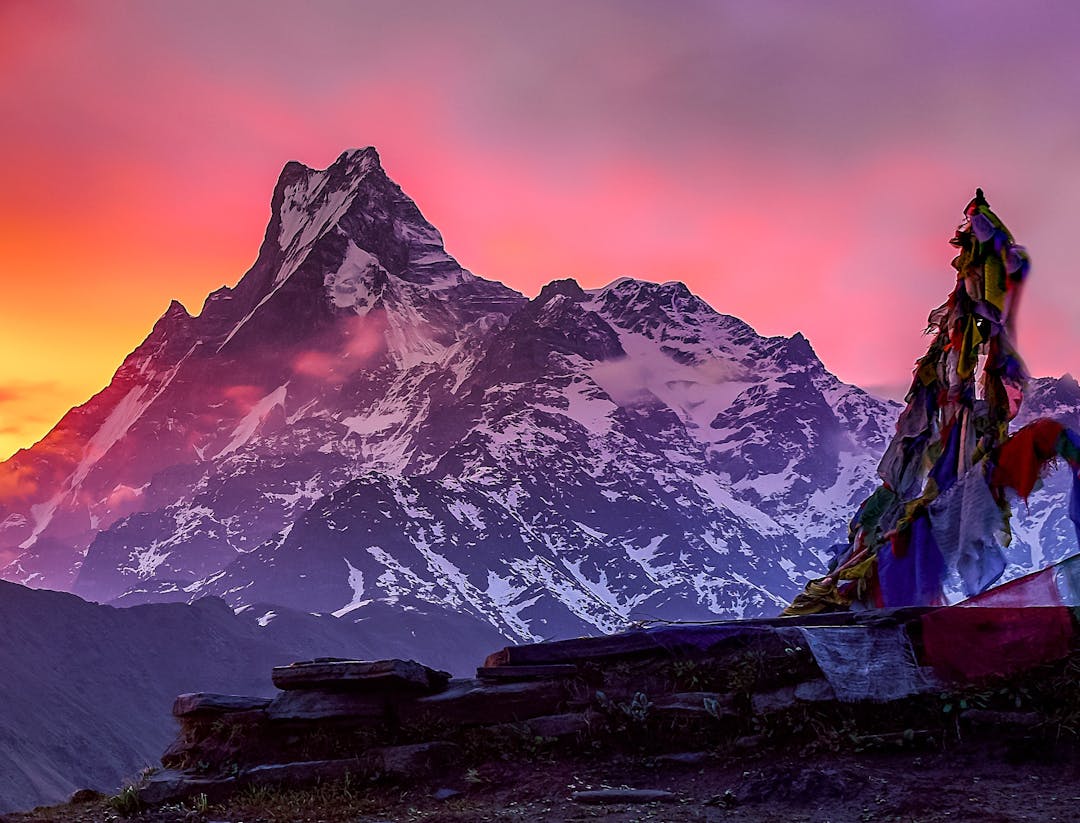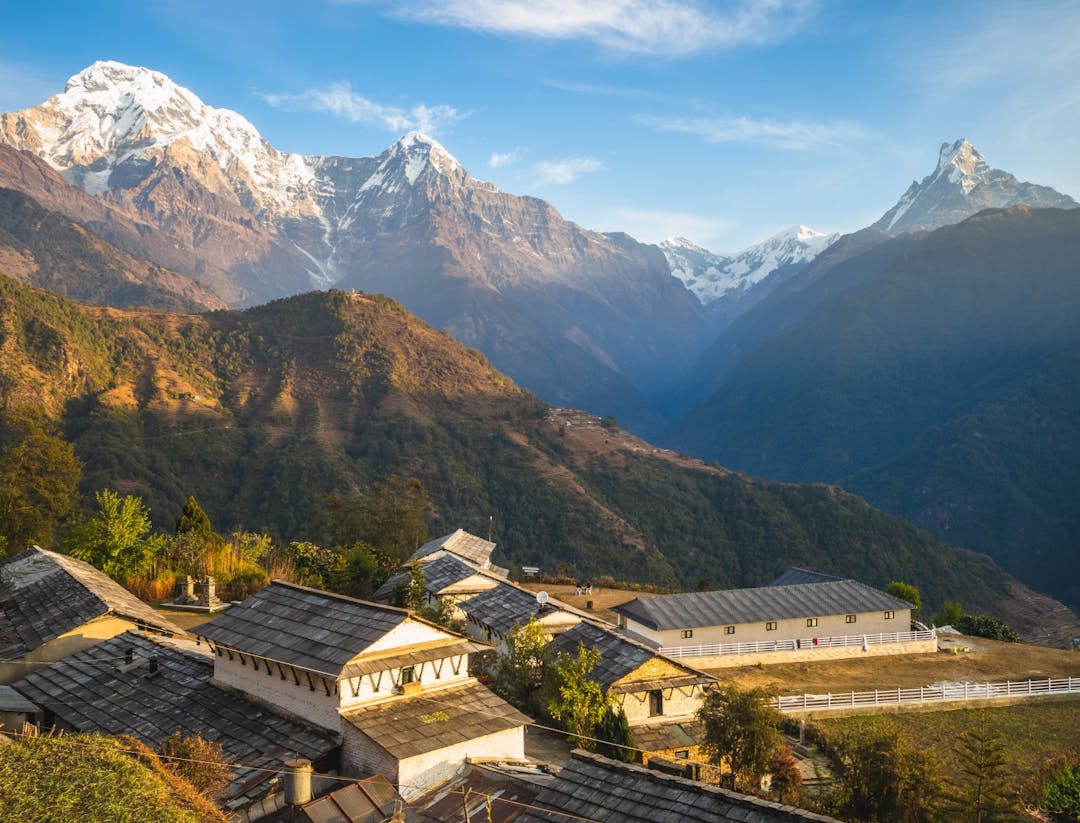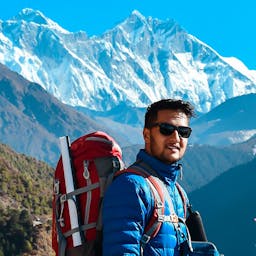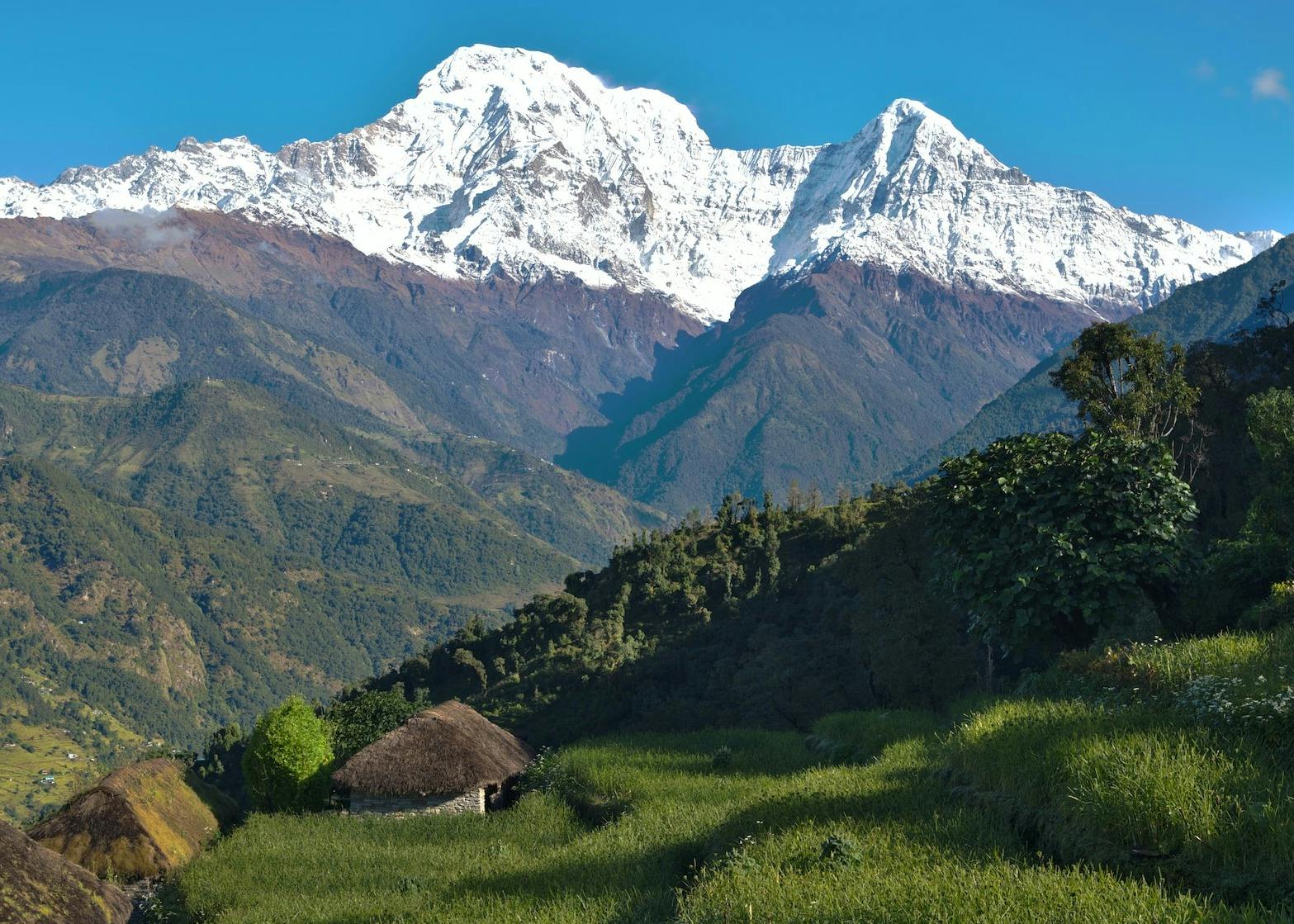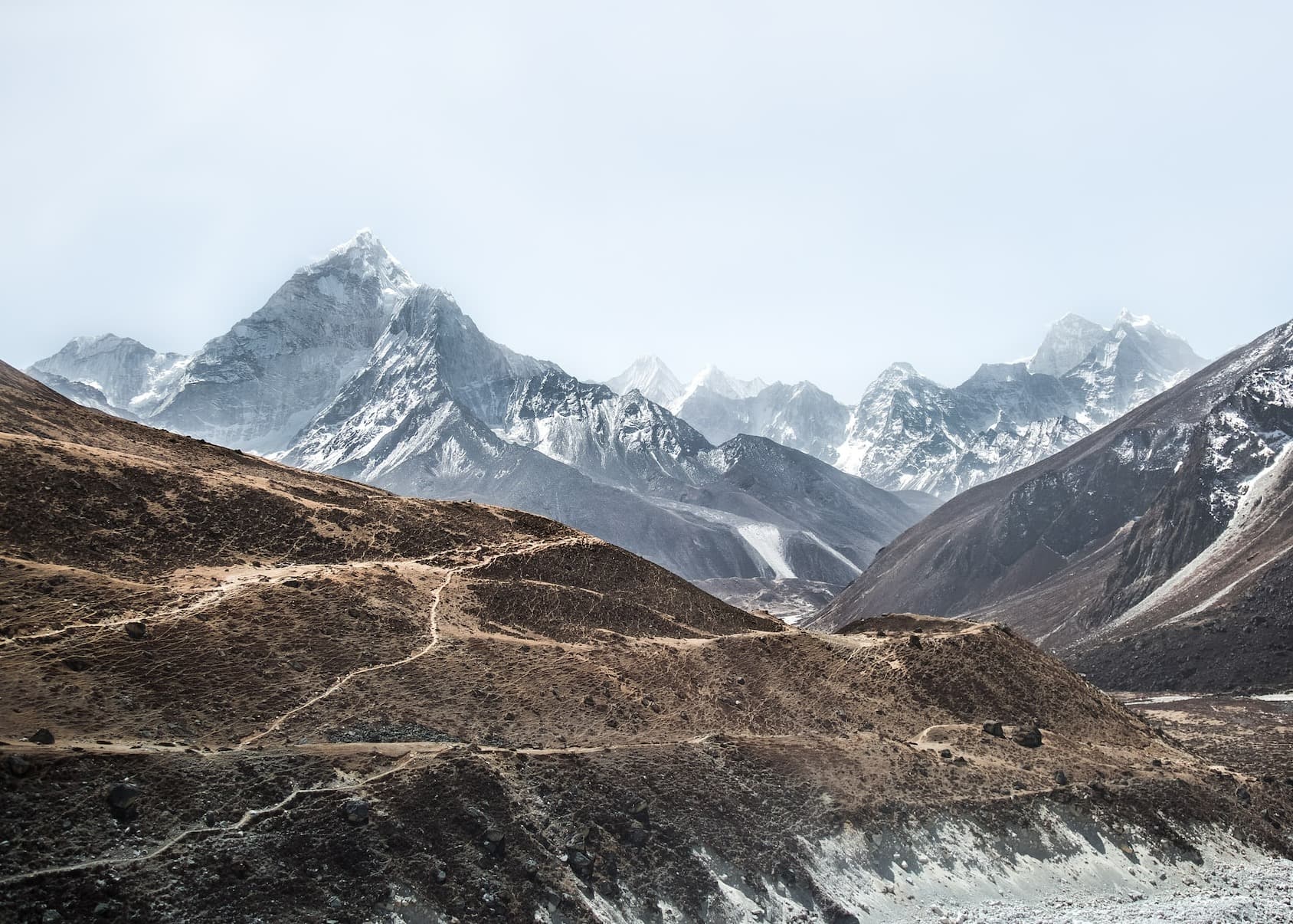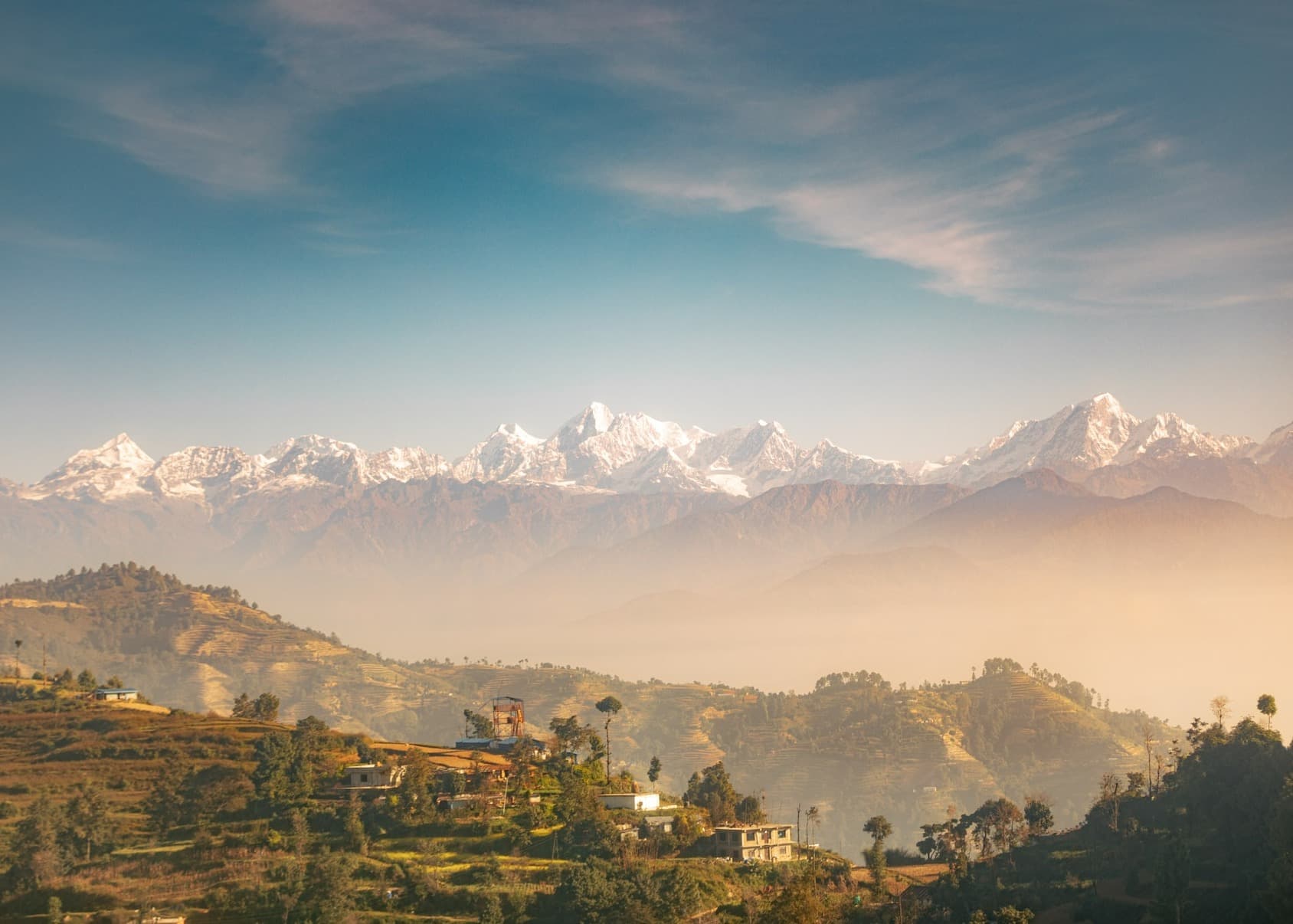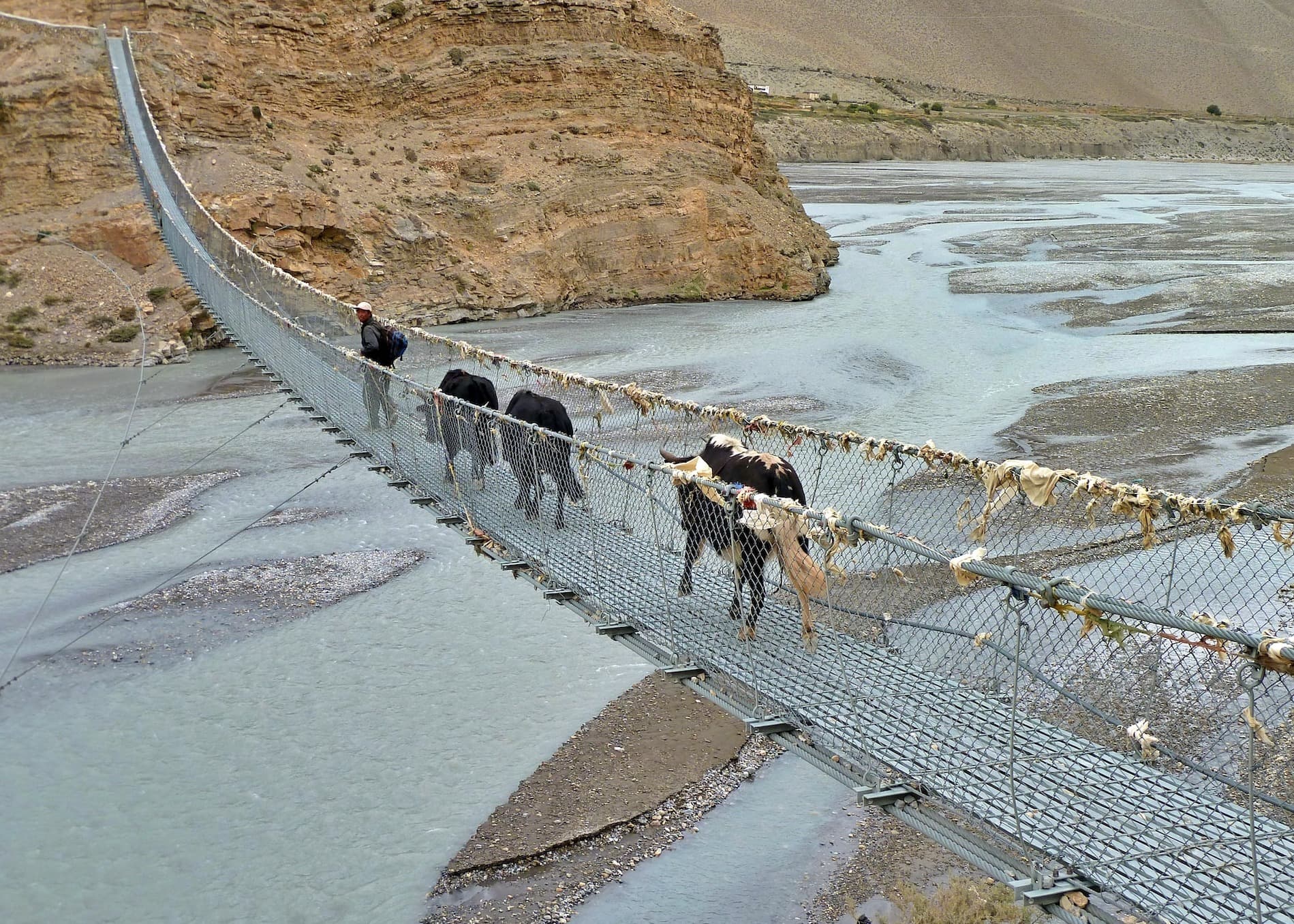- How High is Makalu Base Mountain Base Camp?
- Why Makalu Base Camp Trek?
- Where is Makalu Base Camp Located?
- How Long is the Makalu Base Camp Trek?
- Route Overview
- Day-to-Day Itinerary for Makalu Base Camp Trek
- Is Makalu Base Camp Trek Difficult? Can I Do the Makalu Base Camp Trek Solo?
- Makalu Base Camp Trek: Cost Breakdown
- Accommodation on Makalu Base Camp Trek
- Is Acclimatization Necessary During the Makalu Base Camp Trek?
The Makalu Base Camp Trek is a mesmerizing adventure that takes you to the base camp of Mount Makalu, the fifth highest mountain in the world. Situated in the eastern region of Nepal, this trek offers a thrilling and remote experience for adventure enthusiasts and nature lovers alike.
The trek to Makalu Base Camp combines breathtaking mountain vistas, diverse landscapes, and rich biodiversity. From lush green valleys to rugged terrains, from high-altitude passes to picturesque glaciers, the journey is a visual delight at every step. Additionally, the region is home to an array of flora and fauna, including rare species like the Red Panda, Snow Leopard, and Himalayan Thar.
Unlike the popular treks in the Everest Region and Annapurna regions, the Makalu Base Camp Trek remains relatively untouched and unexplored. This off-the-beaten-path adventure provides a sense of seclusion and tranquility, allowing trekkers to immerse themselves in the raw beauty of nature.
How High is Makalu Base Mountain Base Camp?
Makalu Base Camp is located at an elevation of approximately 5,250 meters (17,220 feet) above sea level. It is the designated starting point for climbers and trekkers who wish to venture towards the summit of Mount Makalu, the fifth highest mountain in the world.
Why Makalu Base Camp Trek?
The Makalu Base Camp Trek offers a unique and awe-inspiring adventure for outdoor enthusiasts and nature lovers. Here are some reasons why this trek should be on your bucket list:
- Untouched Natural Beauty: The trek takes you through diverse landscapes, from lush forests teeming with exotic flora and fauna to barren rocky terrains and glacial valleys. You'll witness the pristine beauty of the Makalu-Barun region, which remains relatively untouched and unexplored.
- Panoramic Mountain Views: As you ascend higher, the trek rewards you with breathtaking views of some of the world's highest peaks, including Mount Everest, Lhotse, Kanchenjunga, and of course, Mount Makalu. The sight of these majestic giants against the backdrop of the clear blue sky is truly awe-inspiring.
- Cultural Immersion: Along the trail, you'll encounter remote Himalayan villages inhabited by ethnic communities such as the Sherpas, Rai, and Limbus. Interacting with the friendly locals, experiencing their unique traditions, and immersing yourself in their warm hospitality adds a cultural dimension to your trek.
- Wildlife and Biodiversity: Makalu-Barun National Park is a biodiversity hotspot, home to a wide range of plant and animal species. You may spot rare wildlife such as the elusive snow leopard, red panda, Himalayan tahr, and a variety of colorful birds, making it a paradise for nature enthusiasts and wildlife photographers.
- Sense of Achievement: Successfully completing the Makalu Base Camp Trek is a testament to your physical and mental resilience. The sense of accomplishment you feel when reaching the base camp, standing in the shadow of Mount Makalu, is indescribable and will stay with you forever.
Where is Makalu Base Camp Located?
Makalu Base Camp is located in the eastern part of Nepal, near the border with Tibet. It lies within the Makalu-Barun National Park, a protected area renowned for its rich biodiversity and unique ecosystem. The base camp offers stunning panoramic views of the surrounding peaks, including Mount Makalu itself.
How Long is the Makalu Base Camp Trek?
The Makalu Base Camp Trek is a challenging and exhilarating journey that spans around 18-20 days, covering a distance of approximately 150 kilometers (93.2 miles) round trip. The trek takes you through diverse landscapes, remote villages, and high mountain passes, providing a true wilderness experience.
Route Overview
The Makalu Base Camp Trek spans over a course of approximately 18 days, including the return journey. The adventure begins with a trek from Chichila to Num, followed by a gradual ascent to Seduwa. From there, the trail takes trekkers to Tashigaon, a Sherpa village nestled in the mountains.
The journey continues with an ascent to Khongma Danda, offering breathtaking views of Mount Makalu and its neighboring peaks. After an acclimatization day, trekkers trek to Dobate, Yangri Kharka, and Langmale Kharka, witnessing the stunning landscapes of the region.
The climax of the trek is reached on day 11 when trekkers arrive at Makalu Base Camp, situated at an impressive altitude of 4,870 meters (15,978 feet). Here, they have the opportunity to explore the base camp, taking in the majestic views of Mount Makalu.
The return journey follows the same trail back to Tumlingtar, with stops at Yangri Kharka, Dobate, Khongma Danda, Tashigaon, Seduwa, and Num. The trek concludes with a short flight from Tumlingtar to Kathmandu, where trekkers can celebrate their accomplishment with a farewell dinner.
Day-to-Day Itinerary for Makalu Base Camp Trek
- Day01: Arrival at Kathmandu (1,320m/4,330ft)
- Day02: Fly from Kathmandu to Tumlingtar then drive to Chichila (1,980m/6497ft)
- Day03: Trek from Chichila to Num (1,560m/5119ft)
- Day04: Trek from Num to Seduwa (1,500m/4922ft)
- Day05: Trek from Seduwa to Tashigaon (2,100m/6890ft)
- Day06: Trek from Tashigaon to Khongma Danda (3,500m/11,483ft)
- Day07: Acclimatization Day
- Day08: Trek from Khongma Danda to Dobate (4,200m/13,780ft)
- Day09: Trek from Dobate to Yangri Kharka (3,557m/11,670 ft)
- Day10: Trek from Yangri Kharka to Langmale Kharka (4,410m/14,468ft)
- Day11: Trek from Langmale Kharka to Makalu Base Camp (4,870m/15,978ft)
- Day12: Explore Makalu Base Camp
- Day13: Trek from Makalu Base Camp to Yangri Kharka (3,557m/11,670 ft)
- Day14: Trek from Yangri Kharka to Dobate(4,200m/13,780ft)
- Day15: Trek from Dobate to Khongma Danda (3,500m/11,483ft)
- Day16: Trek from Khongma Danda to Tashigaon (2,100m/6890ft)
- Day17: Trek from Tashigaon to Seduwa (1,500m/4922ft)
- Day18: Trek from Seduwa to Num (1,560m/5119ft)
- Day19: Trek from Num to Tumlingtar (1315m/4314ft)
- Day20: Fly from Tumlingtar to Kathmandu: 50 mins. | Farewell Dinner
- Day21: Final Departure from Kathmandu
Is Makalu Base Camp Trek Difficult? Can I Do the Makalu Base Camp Trek Solo?
The Makalu Base Camp Trek is considered a strenuous and challenging trek, suitable for experienced trekkers with good physical fitness and prior high-altitude trekking experience. The trail involves steep ascents, rocky terrains, and high passes, which require endurance, proper acclimatization, and adequate preparation.
While it is possible to trek solo, it is highly recommended to join a reputable trekking agency or hire a professional guide. They provide valuable support, ensure your safety, and enhance your overall trekking experience. Additionally, traveling with a group allows you to share the journey with like-minded individuals and create lasting memories.
Makalu Base Camp Trek: Cost Breakdown
The cost breakdown for the Makalu Base Camp Trek is as follows:
- For solo trekkers, the cost is US$ 3250 per person.
- If you are traveling in a group of 2 to 4 people, the cost is US$ 3150 per person.
- For larger groups of 5 to 8 people, the cost is US$ 3050 per person.
- And for even larger groups of 9 to 15 people, the cost is US$ 2950 per person.
The cost generally includes various services and amenities that are essential for a successful trekking experience. This includes transportation to and from the starting point of the trek, accommodation during the trek, meals, necessary permits, and the assistance of experienced guides and porters.
Accommodation on Makalu Base Camp Trek
Accommodation on the Makalu Base Camp Trek typically involves staying in teahouses or lodges along the trail. These teahouses are basic but comfortable, providing trekkers with a place to rest, sleep, and dine.
The teahouses offer simple rooms with twin beds or dormitory-style accommodation. The rooms usually come with a mattress, pillow, and blankets, but it is advisable to bring a warm sleeping bag for added comfort, especially at higher altitudes. The facilities are basic, and you can expect shared bathrooms with squat toilets and running cold water. Hot showers may be available at an additional cost in some teahouses.
Meals are an essential part of the trekking experience, and teahouses provide nourishing and locally prepared food. The menu at teahouses usually offers a variety of options, including Nepali, Tibetan, Indian, and Western dishes. Common meals include dal bhat (rice with lentil soup), momo (dumplings), noodles, pasta, and a selection of vegetables, eggs, and meat. It's important to note that as you ascend higher, the menu options may become more limited, and the prices may increase due to the remote location.
Communication facilities along the Makalu Base Camp Trek are limited due to the remote nature of the region. In some teahouses, you may find irregular mobile network coverage, allowing you to make calls or use mobile data. However, it is advisable to check with your service provider regarding international roaming and connectivity in Nepal.
Internet access is limited, and Wi-Fi availability is rare along the trail. Some teahouses may offer limited Wi-Fi services, but the connection may be slow and unreliable. It's best to be prepared for limited communication during the trek and take this opportunity to disconnect from the outside world and fully immerse yourself in the natural surroundings.
Overall, while accommodation on the Makalu Base Camp Trek is basic, it provides trekkers with a comfortable place to rest and refuel for the next day's journey.
Is Acclimatization Necessary During the Makalu Base Camp Trek?
Yes, acclimatization is crucial during the Makalu Base Camp Trek due to the significant altitude gain along the trail. Proper acclimatization helps your body adjust to the reduced oxygen levels at high altitudes, minimizing the risk of altitude-related illnesses such as acute mountain sickness (AMS).
The itinerary for the Makalu Base Camp Trek includes rest and acclimatization days at strategic points, allowing your body to adapt to the increasing altitude.
In this comprehensive guide, we have covered various aspects of the Makalu Base Camp Trek, providing valuable information to help you plan and prepare for this challenging yet rewarding adventure. From the base camp's location to the best season for the trek, from the difficulty level to the accommodation options, we have explored it all.
The Makalu Base Camp Trek is not for the faint-hearted. It requires physical fitness, prior trekking experience, and a strong determination to conquer the rugged terrains and high altitudes. However, the efforts are generously rewarded with mesmerizing views of Mount Makalu, the fifth highest peak in the world, along with other majestic Himalayan peaks.


